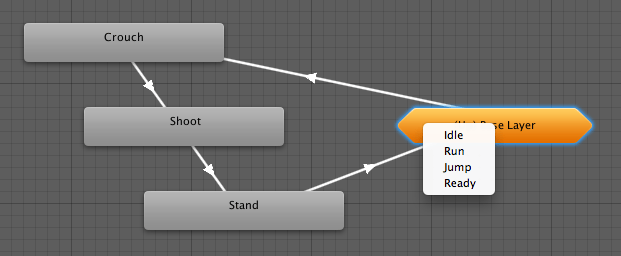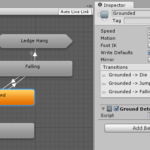Contents Dynamic behaviors in Unity

Introduction
Dynamic behaviors are behaviors that can change in response to certain conditions or inputs. In game development, dynamic behaviors are often used to create more engaging and interactive gameplay experiences. For example, a game might use dynamic behaviors to make enemies react differently depending on the player’s actions, or to generate random levels or enemies based on certain parameters.
Dynamic behaviors can be created using a variety of tools and techniques, such as state machines, scripting, artificial intelligence, physics simulation, procedural generation, and event-driven programming. These tools and techniques allow developers to create complex and dynamic behaviors that can adapt to changing conditions in real-time.
Dynamic behaviors can add depth and complexity to a game, making it more interesting and engaging for players. However, they require careful planning and testing to ensure that they are balanced and fair for the player. Dynamic behaviors that are too difficult or frustrating can lead to player frustration and can negatively impact the game’s overall experience.
Overall, dynamic behaviors are an important part of game development, and they are used in many different ways to create immersive and engaging gameplay experiences. By creating behaviors that can adapt to changing conditions, game developers can create games that are more challenging, rewarding, and fun to play.
Here are some examples of dynamic behaviors in game development:
- Enemy AI: In many games, enemies have dynamic behaviors that change based on the player’s actions. For example, an enemy might become more aggressive if the player attacks it, or it might retreat if its health is low.
- Physics-based interactions: Physics simulations can create dynamic behaviors that change based on the movement and interactions of game objects. For example, a physics-based puzzle might require the player to manipulate objects in a certain way to reach a goal.
- Procedural generation: Procedural generation can create dynamic behaviors by generating content on the fly based on various parameters. For example, a game might generate random levels or enemies based on the player’s progress through the game.
- Interactive environments: In some games, the environment itself can have dynamic behaviors that change based on the player’s actions. For example, a destructible environment might change based on where the player shoots or hits it.
Dynamic behaviors can add depth and complexity to game development, creating more engaging and immersive gameplay experiences. However, they require careful planning and testing to ensure that they are balanced and fair for the player.
What are some tools and techniques used to create Dynamic behaviors in Unity?
There are many tools and techniques used to create dynamic behaviors in game development. Here are some of the most common ones:
- State machines: As mentioned earlier, state machines are a powerful tool for creating dynamic behaviors. They allow developers to define a set of states, transitions, and actions that occur when a transition occurs.
- Scripting: Scripting is another common technique used to create dynamic behaviors. Game engines like Unity and Unreal Engine provide scripting languages that allow developers to create custom behaviors and interactions.
- Artificial intelligence: AI is often used to create dynamic behaviors for non-player characters (NPCs). This can involve creating behavior trees, decision-making algorithms, and other AI systems that allow NPCs to respond to the player’s actions.
- Physics simulation: Physics simulation is used to create dynamic behaviors that respond to the movement and interactions of game objects. This can involve using rigid body physics, soft body physics, or other physics systems to create realistic and engaging interactions.
- Procedural generation: Procedural generation involves using algorithms to generate content on the fly based on various parameters. This can be used to create random levels, enemies, or other game elements that change dynamically based on the player’s progress.
- Event-driven programming: Event-driven programming involves creating code that responds to specific events or triggers. This can be used to create dynamic behaviors that change based on the player’s actions or other events in the game.
These are just a few of the many tools and techniques used to create dynamic behaviors in game development. Depending on the game and the desired behaviors, developers may use one or more of these techniques to create engaging and immersive gameplay experiences.
What are some common challenges in creating dynamic behaviors?
Creating dynamic behaviors in games can be a challenging process. Here are some common challenges that developers may face:
- Complexity: Dynamic behaviors can quickly become complex, especially when dealing with multiple variables and conditions. It can be difficult to create a system that is both flexible and easy to understand and maintain.
- Balancing: Dynamic behaviors must be carefully balanced to ensure that they are challenging but not frustrating for players. It can be challenging to create behaviors that are both challenging and fair.
- Performance: Dynamic behaviors can be computationally expensive, especially when dealing with complex AI or physics simulations. It can be a challenge to create behaviors that run smoothly on a variety of hardware configurations.
- Integration: Dynamic behaviors must be integrated into the game engine and other systems, such as AI and physics engines. This can be a complex process that requires careful planning and testing.
- Testing: Dynamic behaviors must be thoroughly tested to ensure that they work as intended and do not cause unintended consequences. This can be a time-consuming process that requires a lot of attention to detail.
- Iteration: Dynamic behaviors may need to be iterated upon and refined throughout the development process. This can require a lot of time and resources, especially if the behavior is complex.
Creating dynamic behaviors in games requires a lot of planning, testing, and iteration. Developers must carefully balance the challenges and rewards of the game to create a fun and engaging experience for players.
How can developers ensure that dynamic behaviors are balanced and fair?
To ensure that dynamic behaviors in games are balanced and fair, developers can follow several best practices:
- Set clear goals: The first step is to establish clear goals for the dynamic behavior. What is the player supposed to accomplish? What are the challenges and obstacles that they will face? By setting clear goals, developers can ensure that the behavior is focused and purposeful.
- Test extensively: Dynamic behaviors should be tested extensively to ensure that they are challenging but not frustrating for players. This can involve testing the behavior on a variety of hardware configurations and with different types of players.
- Use player feedback: Player feedback is a valuable tool for balancing dynamic behaviors. Developers should gather feedback from players throughout the development process to ensure that the behavior is fun and engaging.
- Iterate and refine: Dynamic behaviors may need to be iterated upon and refined throughout the development process. This can involve tweaking the difficulty level, adjusting the rewards, or modifying the behavior to make it more engaging.
- Consider player skill level: Dynamic behaviors should be designed to accommodate players of different skill levels. This can involve providing multiple difficulty levels, or designing the behavior to be adaptive based on the player’s skill level.
- Avoid frustration: Developers should avoid creating behaviors that are overly frustrating or punishing for players. This can lead to player frustration and can negatively impact the game’s overall experience.
By following these best practices, developers can ensure that dynamic behaviors in games are balanced and fair for players. This can help create a more engaging and immersive gameplay experience that keeps players coming back for more.
Example of a game that balances dynamic behaviors
One example of a game that balances dynamic behaviors well is “The Legend of Zelda: Breath of the Wild”. The game features a wide variety of dynamic behaviors, including enemy AI, physics-based interactions, and procedural generation.
One of the key ways that “Breath of the Wild” balances its dynamic behaviors is by providing players with a lot of freedom and choice. The game’s open-world design allows players to approach challenges and obstacles in different ways, which encourages experimentation and creativity. The game also provides players with a wide range of tools and abilities, which can be used to overcome different challenges in different ways.
The game’s dynamic behaviors are also well-balanced in terms of difficulty. The game gradually introduces new challenges and obstacles, allowing players to build up their skills and abilities over time. The game also provides players with a variety of difficulty levels, allowing them to customize the experience to their skill level.
Overall, “The Legend of Zelda: Breath of the Wild” is a great example of a game that balances dynamic behaviors well. By providing players with freedom and choice, gradually introducing new challenges, and offering different difficulty levels, the game creates a fun and engaging experience that keeps players coming back for more.
Conclusion: The Evolving Art of Dynamic Behaviors in Unity
Mastering dynamic behaviors in Unity is clearly a cornerstone of modern game development, transforming static environments into living, breathing worlds. The ability to craft systems that react, adapt, and surprise—whether through sophisticated AI, intricate physics, or clever procedural generation—is what elevates a good game to an unforgettable experience. While the path to implementing these behaviors is paved with challenges, from managing inherent complexity to ensuring fair and engaging balance for all players, the rewards in terms of player engagement and immersion are undeniable.
As the tools within Unity continue to evolve and developer expertise deepens, the potential to create even more nuanced, responsive, and compelling dynamic interactions will only expand. This ongoing evolution promises players ever richer and more personalized gameplay journeys, where the careful orchestration of these adaptive elements, as demonstrated in exemplary titles, truly defines the evolving magic and replayability of a game.
A game developer that wants to share its knowledge and experience with other game developers-





